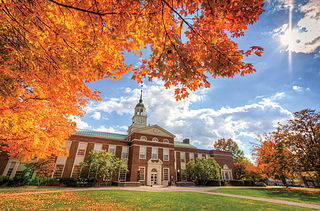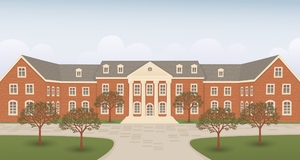Conceptualizing the Shared Governance Model in American Higher Education: Considering the Governing Board, President and Faculty
By
2013, Vol. 5 No. 12 | pg. 1/2 | »
IN THIS ARTICLE
The evolution of the governance model in higher education is a complex idea to pin down with simple definitions. New stakeholders, innovative ideas, and external demands make the institution of higher education a panacea for the ills of society. In a contemporary sense, colleges and universities are at odds with the past and the present, constantly struggling to respect the former while striving toward the latter. The “shared governance” model was conceived to attempt to respect the interests of external and internal groups, even when criticism flows at a constant rate (Kerr, 2001). The ideal conception of “shared governance” models was not to serve a dominant group while simply considering the ideas of others. It should consider the input and concerns of the three groups identified in this paper – the governing board, president, and faculty – while ultimately serving the needs of the broader society. Void of this principle, colleges and universities would not achieve their ultimate mission of disseminating knowledge and preparing students to become productive citizens (Gerber, 2001). Although the model has undergone many changes, and will continue to do so, it identifies key members of the institutional community. The responsibility of these key members (i.e. governing board, president, faculty) is to direct their diverse interests into a focused institutional effort (Kerr, 2001).
Conceptualizing the Governing Board's RoleIdentifying the contemporary conception of the external governing board must begin with an idea of its intended purpose. Within the “shared governance” model, this group which consists of a variety of interested external stakeholders serves to steer a college or university in a specific direction. The external governing board is consistently engaged in the implementation of policy and the strategic plan/mission of an institution (Trow, 1985). Crucial decisions including, but not limited to the distribution of funds, hiring of faculty members, resource allocation fall under the umbrella of the board’s responsibilities. Complex colleges and universities have governing boards capable of leveraging the power of the president, and the faculty to reach short and long term goals (Trow, 1985). Achieving short and long term goals are the responsibility of the governing board in the “shared governance” model. The college or university core values and mission must be respected, while being receptive to the needs of the consumer (society/student). Gerber (2001) provides a unique metaphor to illustrate this dual responsibility. The “inner core” of a college or university is the institutional mission and values described above. A semi-permeable “outer shell” is formed by the governing board to protect it from radical external pressures. At the same time the governing board vets promising ideas to incorporate into the “inner core.” The purpose of the governing board then extends not only as a leveraging agent, but an agent of review both inside and outside of the institution. This concept of the governing board’s purpose can have positive and negative effects. In a positive light, the governing board gives other power holders (President, Faculty) broad perspective by looking outward toward society. At the same time, this type of thinking may also lead to political intervention and ratcheting up of administration.(Zusman, 2005). These types of trends in institutional governance lead to the power of boards becoming less focused on traditional, “core” principles. Identifying these key concepts serves to further enhance the understanding of how the role of the governing board came to exist in the contemporary governance model. History of the Governing Board“‘Public Authority’ is a very mixed entity of emperors and popes, ministers of education, grants committees, trustees, and Royal Commissions” - Kerr, 2001 Public authority resides in the governing board, which has undergone many permutations in its evolution. Governing boards began to curb the influence of faculty and students, and ultimately led to the modern incarnation that furnishes institutional mission. As Kerr describes, a variety of public authorities helped shape governance structures associated with Higher Education over time. Diverse leadership models in the infancy of higher education would serve as the blueprints for its expansion to a larger customer base. The historical basis that pointed to a need for external control rose out of the teaching and student guilds of the University of Paris and University of Bologna. Teaching guilds (Paris), rooted in classical teaching of the trivium or quadrivium organized into “nations” based primarily on common language or ethnicity (Lucas, 2006). A proctor became the lead administrator of a subcommittee of faculty members, codifying and implementing the rules and regulations while also holding fiscal responsibility. Gerber (2001) noted that the governing board serves the purpose of preserving an “inner core” of values while establishing an “outer shell” which served the purpose of protecting the institution from too many exterior pressures. However, a governance model such as this which is invested in faculty control could lead to an exterior that cloisters the institution. In contrast to the faculty governed studium generale of Paris, the University of Bologna was organized and controlled by students. The controversial nature of Bologna’s student governance eventually ended in a push for external leadership initiatives. Student guilds or collegia formed in a similar manner to their predecessors in the North (Lucas, 2006). Autonomy was given to these students, and their role in governing the institution included faculty selection, wages, term of stay and even curriculum and instruction. This medieval model highlights the contemporary role of the governing board that Trow (1985) identified above. The “shared governance” model dictates that the governing board manages hiring, resource allocation, and budget responsibilities. An interesting comparison is drawn between the responsibilities vested in students in medieval universities as matching that of the modern governing board. The American colonial context also provides similar examples of the concepts of governance boards which eventually led to the “shared” construct. American institutions of higher education were created to serve and train educators, litigators and public officials (Keohane, 1998). Participation in higher education groomed the elite, which was a belief that survived the long journey from Europe. Preservation of a ruling class within the university itself became an entirely different matter. An American external lay board grew out of the need to blunt the overwhelming influence of faculty members seen as having too much executive power (Brubacher, 1997). External lay boards of trustees, composed of local citizens, industrialists and clerical staff were an iron clad stipulation in the chartering of American colleges and universities including Harvard (1636), William & Mary (1693) and Dartmouth College (1769). The concept of the governing board as a buffer against the power of the faculty was seen as a positive, which outweighed any concern for expanding channels of political influence and increased bureaucracy noted above. Perhaps more practical forces were behind the popularity of the lay board of trustees in the American edition of college and university. European teaching guilds could not be quickly transferred to the colonies, who were working hard enough to preserve curricular traditions. Brubacher (1997) noted that the majority of Protestant colonial emigrants distrusted the archaic cloistered institution with no connection to the outside world. External governance models in the colonies were supplemented with another element that would bridge the gap between faculty/students and the world outside university borders. As Zusman (2005) stated above, instead of focusing inward on “core values,” governing boards incorporated the democratic value of social consciousness. As the “shared governance” model continued to build its framework around the governing board, the college/university president enforced their principles. Conceptualizing the President's RolePresiding as the voice of the governing board, the contemporary college or university president has some key purposes that serve stakeholders above, and below him/her. Trow (1985) identifies the president broadly as a leader who is in charge of maintaining the course of the institution in a positive direction. A variety of factors come in to play as the president embodies the principles of the “shared governance” model. The president should serve as a personification of the core values and character of an institution internally, while sharing the responsibility of marketing these values those outside the institution. The shared responsibility of tending to outside demands while tending to internal requests is what defines the effectiveness of his/her leadership (Trow, 1985). Throughout the history of American colleges and universities, the president as a political leader is illustrated through a careful balance of resolving faculty conflicts, coordinating resources, and managing the quality of the institutions output (Lucas, 2006). The history will also note that the president has taken on many forms in times of great change and innovation, and in calmer environments. Consequently, the “shared governance” model at times necessitates a president who is quite powerful, and at other times demand he/she preserve the status-quo (Kerr, 2001). The president himself is a “shared” entity among the governing board, the faculty, students and administration. Kerr (2001) encouraged the contemporary conception of the college or university president be that of a mediator. This conceptualization of the president is a contemporary take, but provides insight into the vast array of stakeholders he/she must account for. He/she mediates between: a) internal stakeholders (i.e. students, faculty, trustees) and within those bodies themselves b) interest groups/change agents and the institution c) preservation and innovation (Kerr, 2001). As stated earlier, the role of the president may gravitate toward one of these sub-sections at specific time or another as history will note. However, these key concepts guide an understanding of the American college/university presidency and its most influential contributors. The President“The president becomes the central mediator among the values of the past, the prospects for the future, and the realities of the present” - Kerr, 2001 American colonial college presidents had to look no further than the Protestant Reformation for their historical roots. John Calvin’s Geneva Academy embodied reformation dogma, by curbing the influence of the church in the business of academic institutions. A surrender of power in academia from the ecclesiastic roots marked a shift in institutional governance. The internal governance of the Geneva Academy was led by a Chief Academic Officer, or “rector” who guided the institution on a day-to-day basis in financial affairs, faculty management and disputes between faculty and students (Cowley, 1980). The president embodies the core institutional values, while at the same time mediating and manage on a day-to-day basis. As outlined by the concepts above, this is congruent with contemporary ideas of the president’s role. External control at Geneva relied on a civil branch of government for financial and curricular leadership, and distributed power between internal and external forces in an effective manner. Scottish and Irish colleges at Edinburgh and Trinity soon modeled their internal and external power structures on that of Calvin’s Geneva model, separating power between some form of external board of non-academics, and internal leadership consisting of faculty members (Cowley, 1980). That separation, is what necessitates the president becoming as Kerr (2001) describes, a “mediator.” Distribution of power between the internal and external forces, tradition and innovation, and academics and administrators is a presidential concept which grew from Edinburgh and Trinity. Eventually, the role of the president would change in power and scope as an explosion of knowledge and innovation would demand in the post-civil war period. The day-to-day life of the president in the Post-Civil War period changed dramatically as a result of a variety of external influences. Demands and pressures from external constituencies to include vocational education, explore free elective formats, and incorporate research dramatically changed the responsibilities of the president (Veysey, 1965). In addition to this, the small but gradual influx of black students, female students, and immigrants into institutions of higher education drove presidents to take on new responsibilities to new groups. The shared responsibility resided within institutional presidents at the time to respect the core values, while gradually incorporating more of an external focus toward social pressures. Charles W. Eliot of Harvard and Andrew D. White of Cornell used the wealth of power and responsibility as an advantage to incite curricular change. Both asserted executive power vested in the presidency to bring utilitarian reforms such as the free elective system (in different forms) to the landscape of higher education (Veysey, 1965). Eliot and White also contributed changes in the role of governance to drive higher education toward a more mass audience in the mid-19th century. The times which demanded great innovation, also demanded a president who could leverage their power effectively. That spirit of innovation that changed university mission and scope was not without a price. Instead of boards demanding the presidents have a strong religious and moral code, piety began to decrease in importance next to financial and business acumen (Lucas, 2006). Consequences in the “shared governance” model became far reaching in reference to responsibilities of the contemporary college/university president. Paradigm shifts (i.e. elite, mass, universal) indeed affected the role of the college/university president. Kerr (2001) highlights the necessity of a contemporary president to be a mediator between the ideals born in these paradigms. The president has evolved from the days of Eliot and White from an executive power player, to a mediator operating in a society that often isolates education as a definite panacea.Continued on Next Page » Suggested Reading from Inquiries Journal
Inquiries Journal provides undergraduate and graduate students around the world a platform for the wide dissemination of academic work over a range of core disciplines. Representing the work of students from hundreds of institutions around the globe, Inquiries Journal's large database of academic articles is completely free. Learn more | Blog | Submit Latest in Education |



















